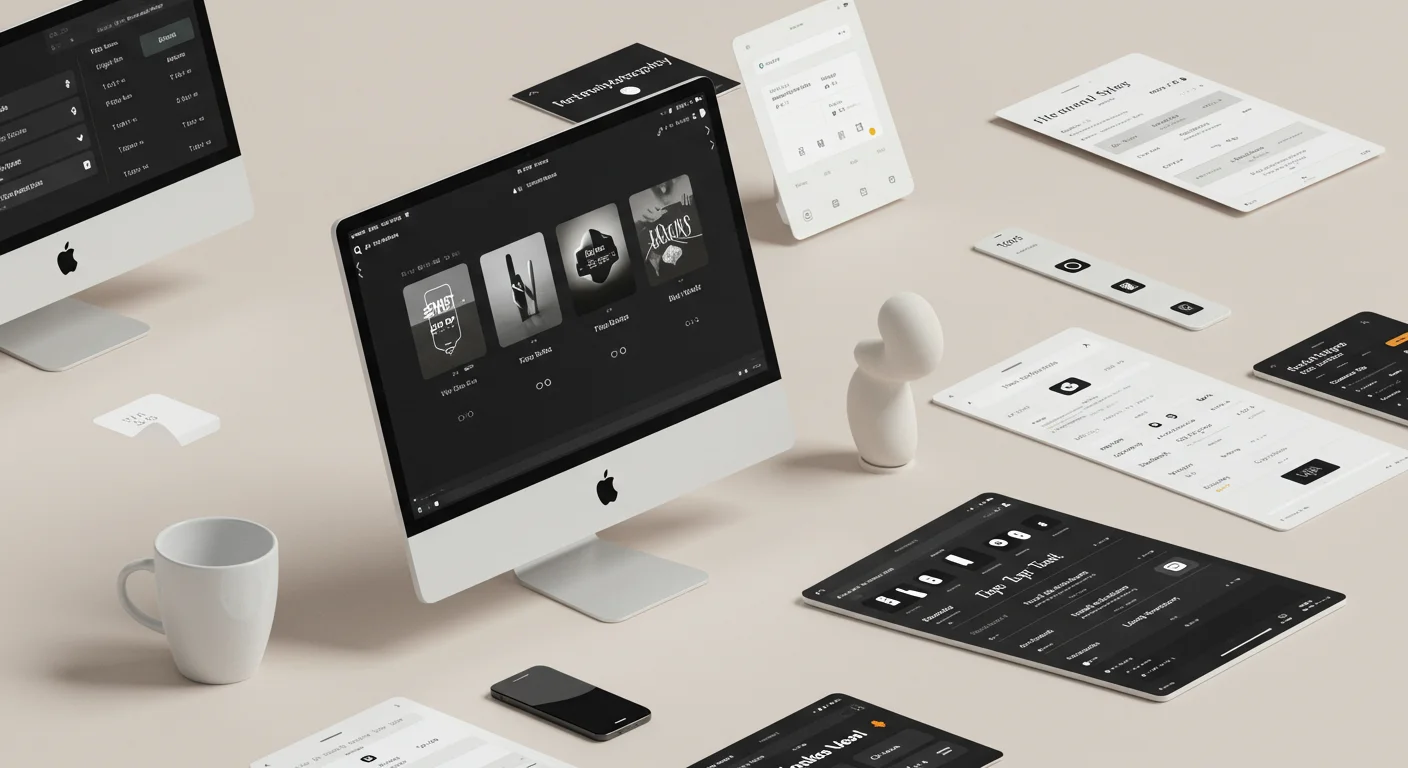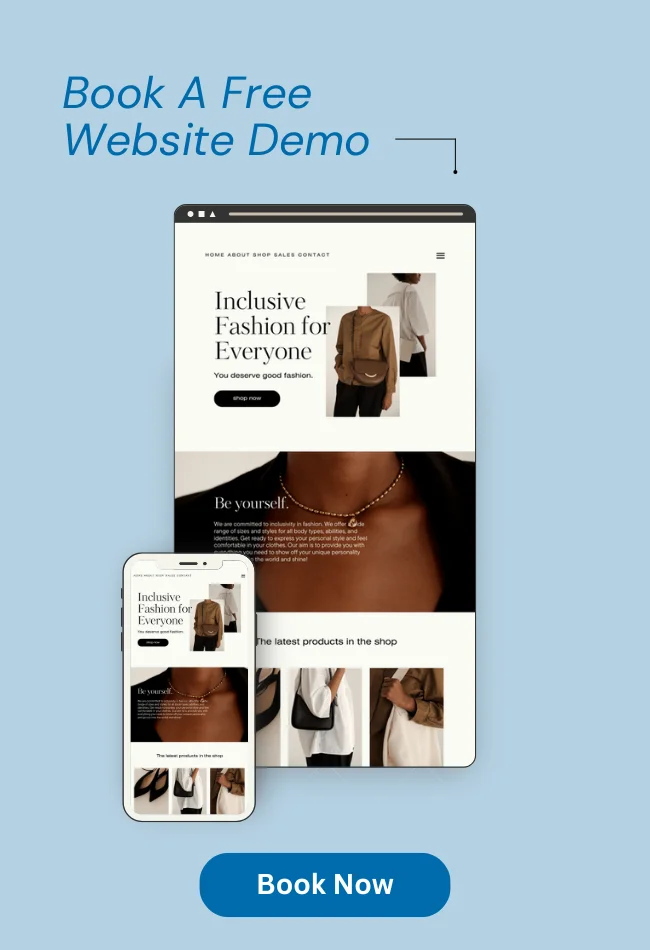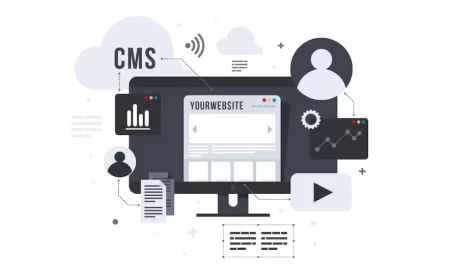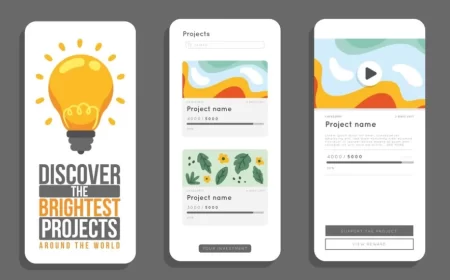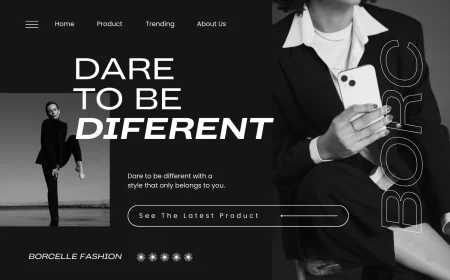In the intricate tapestry of User Interface (UI) design, while visuals, layouts, and interactions often capture immediate attention, the unsung hero that profoundly impacts usability, accessibility, and overall user experience is typography. The choice of fonts for UI design is not merely an aesthetic decision; it is a critical strategic choice that dictates how easily users can read, comprehend, and interact with digital content across a myriad of devices and contexts.
A well-chosen typeface can establish brand identity, guide the user’s eye through complex information, reduce cognitive load, and even subtly influence emotional responses. Conversely, a poor font choice can lead to eye strain, confusion, frustration, and ultimately, a diminished user experience, regardless of how beautiful the rest of the interface may be. In UI design, text is functional; it serves to inform, instruct, and facilitate interaction. Therefore, the legibility and readability of every character, word, and block of text are paramount.
This definitive guide will delve deep into the art and science of selecting fonts for UI design. We will meticulously explore the fundamental principles of readability and legibility, dissect the crucial factors that influence font choice, and provide an extensive, curated list of recommended typefaces, categorized by their characteristics and ideal applications. Furthermore, we will offer practical tips on font pairing, hierarchy, and optimization, empowering designers to make informed typographic decisions that elevate their UI projects to new heights of clarity, efficiency, and user delight.
I. Understanding Readability vs. Legibility in UI Design
Before diving into specific fonts, it’s crucial to grasp these two foundational concepts:
- Legibility:
- Definition: Refers to how easily individual characters or letters within a typeface can be distinguished from one another. It’s about the clarity and distinctiveness of the letterforms themselves.
- Factors Affecting Legibility:
- Character Distinction: How easily can a lowercase ‘l’ be differentiated from an uppercase ‘I’ or the number ‘1’? (The “Il1 test” is a common check).
- Open Shapes (Apertures): The openings within letters (e.g., ‘a’, ‘e’, ‘c’) should be generous, especially at small sizes.
- Stroke Contrast: Minimal variation in stroke width (monolinear) generally improves legibility on screens.
- X-height: A larger x-height (the height of lowercase letters like ‘x’) often contributes to better legibility at smaller sizes.
- Why it matters in UI: UI text is often short (labels, buttons, alerts) and needs to be instantly recognizable without ambiguity, especially in small sizes or on low-resolution screens.
- Readability:
- Definition: Refers to how easily words, sentences, and blocks of text can be read and comprehended. It’s about the overall flow and comfort of reading.
- Factors Affecting Readability:
- Typeface Choice: Some typefaces are inherently more readable for long passages.
- Font Size: Appropriate size for the context and target audience.
- Line Height (Leading): The vertical spacing between lines of text. Too tight or too loose hinders flow.
- Letter Spacing (Tracking) & Word Spacing (Kerning): Consistent and appropriate spacing between letters and words.
- Line Length: The number of characters per line. Optimal range is generally 45-75 characters for body text.
- Contrast: Sufficient contrast between text color and background color.
- Why it matters in UI: For longer content (e.g., blog posts, product descriptions, terms and conditions), users need to be able to comfortably scan and read without eye fatigue.
The Relationship: Legibility is a subset of readability. A font must first be legible for it to be readable. In UI design, both are critical, but legibility often takes precedence for functional text elements.
II. Key Considerations for Choosing Fonts for UI Design
Selecting the right typeface involves balancing functional requirements with aesthetic appeal and brand identity.
- Functionality & Purpose:
- Functional Text: For labels, buttons, navigation items, alerts, and captions, prioritize absolute clarity and legibility, even at small sizes.
- Body Text: For longer paragraphs, prioritize readability and comfort for sustained reading.
- Headings/Display Text: For titles and large headlines, you have more room for expressive or unique fonts, but they should still be clear.
- Versatility & Consistency:
- Multiple Weights & Styles: A good UI font family offers a wide range of weights (Light, Regular, Medium, Bold, Black) and italics. This allows for clear typographic hierarchy without introducing multiple font families.
- Consistency Across Devices: The font should render consistently and clearly across various screen sizes, resolutions, and operating systems (desktop, tablet, mobile, smartwatches).
- Scalability: The font should maintain its clarity and aesthetic appeal when scaled up or down.
- Brand Consistency & Tone:
- The font choice should align with your brand’s personality and values. A tech startup might opt for a modern sans-serif, while a luxury brand might use a refined serif or elegant sans-serif.
- Avoid fonts that clash with your brand’s intended message.
- Accessibility (WCAG Compliance):
- Contrast: Ensure sufficient color contrast between text and its background (WCAG 2.1 AA minimums).
- Font Size: Provide adequate default font sizes and allow for user customization (e.g., dynamic type on mobile platforms).
- Avoid Overly Decorative Fonts: Steer clear of highly stylized, script, or overly condensed/expanded fonts for functional text, as they can hinder readability for users with visual impairments or reading disorders.
- Clear Letterforms: Fonts with distinct letterforms (e.g., ‘a’ vs. ‘o’, ‘c’ vs. ‘e’) are crucial.
- Performance:
- File Size: Web fonts can impact load times. Optimize font files (e.g., subsetting, WOFF2 format) to ensure quick loading.
- Number of Weights: While versatility is good, using too many weights or styles from a single font family can increase file size. Load only what’s necessary.
- Language Support (Glyph Coverage):
- If your UI targets a global audience, ensure the font supports all necessary character sets, diacritics, and scripts (Latin Extended, Cyrillic, Greek, etc.).
- Licensing:
- Be aware of the font’s licensing terms (e.g., Open Source, commercial license, Google Fonts license). Ensure it’s suitable for your project’s usage (personal, commercial, web, print).
III. Categories of Fonts for UI Design
While many fonts can work, certain categories are particularly well-suited for UI.
- Sans-Serif Fonts:
- Characteristics: Lack serifs (the small decorative strokes at the end of letterforms). Often perceived as modern, clean, minimalist, and highly legible on digital screens due to their straightforward appearance and consistent stroke width.
- Why for UI: Excellent for body text, labels, buttons, and headings due to their clarity and readability at various sizes, especially on lower-resolution displays. They scale well and maintain legibility.
- Sub-categories:
- Geometric Sans-Serifs: Based on simple geometric shapes (circles, squares, triangles) (e.g., Futura, Montserrat).
- Humanist Sans-Serifs: More organic, inspired by calligraphy, with more open forms (e.g., Open Sans, Lato, Roboto).
- Grotesque Sans-Serifs: Early sans-serifs, often more industrial or neutral (e.g., Helvetica, Arial, Inter).
- Serif Fonts (Limited Use in UI):
- Characteristics: Have serifs. Often perceived as traditional, elegant, authoritative, and good for long-form reading in print.
- Why (Limited) for UI: Generally less preferred for body text on screens due to serifs potentially blurring at lower resolutions or smaller sizes. However, they can be used effectively for:
- Headings/Display: To add a touch of sophistication or traditional feel (e.g., Playfair Display, Merriweather).
- Brand Identity: If the brand strongly aligns with a classic or editorial aesthetic.
- Considerations: Use with caution, ensure high contrast and sufficient size.
- Monospace Fonts (Niche Use in UI):
- Characteristics: Every character occupies the same horizontal space, like a typewriter.
- Why for UI: Primarily used for:
- Code Snippets: Ideal for displaying code due to consistent alignment.
- Data Tables: Where precise column alignment is crucial.
- Technical UIs: To convey a technical or retro feel.
- Considerations: Can be less readable for long passages of prose due to even spacing.
- Display/Decorative Fonts (Very Limited Use in UI):
- Characteristics: Highly stylized, designed for large sizes (headlines, logos) to grab attention.
- Why (Very Limited) for UI: Almost never suitable for functional or body text due to poor legibility at small sizes. Can be used very sparingly for:
- Logos/Branding: If it’s part of the visual identity.
- Hero Headlines: If the design calls for a unique, attention-grabbing element, but ensure readability.
IV. Recommended Fonts for UI Design (with Google Fonts Links)
Here’s a curated list of highly recommended fonts for UI design, primarily sans-serifs, known for their legibility, readability, and versatility. Many of these are available on Google Fonts, making them free and easy to implement.
A. Top Sans-Serif Choices (Highly Recommended for Most UI)
- Inter
- Characteristics: Designed specifically for user interfaces by Rasmus Andersson. Features a large x-height, clear distinctions between similar characters (Il1 test), and excellent legibility at small sizes. Available in many weights and as a variable font.
- Why it’s awesome for UI: Purpose-built for screens, highly versatile for all UI elements (body, labels, headings), and open-source.
- Google Fonts: https://fonts.google.com/specimen/Inter
- Roboto
- Characteristics: Developed by Google as the system font for Android. It’s a neo-grotesque sans-serif with a mechanical skeleton but largely open and friendly curves. Wide range of weights.
- Why it’s awesome for UI: Modern, highly readable, and versatile. Its widespread use makes it familiar to many users.
- Google Fonts: https://fonts.google.com/specimen/Roboto
- Open Sans
- Characteristics: A humanist sans-serif designed by Steve Matteson. Neutral, friendly, and highly legible across different sizes. One of the most popular Google Fonts.
- Why it’s awesome for UI: Excellent readability for body text, clean appearance, and extensive language support.
- Google Fonts: https://fonts.google.com/specimen/Open+Sans
- Lato
- Characteristics: A humanist sans-serif that balances warmth and professionalism. Semi-rounded letterforms give it a friendly, approachable tone, while its strong structure ensures excellent legibility.
- Why it’s awesome for UI: Versatile for corporate, web, and UI. Works beautifully for both headings and body text.
- Google Fonts: https://fonts.google.com/specimen/Lato
- Montserrat
- Characteristics: A geometric sans-serif inspired by old posters and signs from Buenos Aires. Features clean, strong lines and a modern feel.
- Why it’s awesome for UI: Eye-catching for headlines, but also legible enough for smaller text, especially in its lighter weights.
- Google Fonts: https://fonts.google.com/specimen/Montserrat
- Poppins
- Characteristics: A geometric sans-serif with uniform stroke width, giving it a clean, professional look. Its geometric shapes ensure legibility in small sizes.
- Why it’s awesome for UI: Modern, timeless, and works well for both headings and body text, especially on digital screens.
- Google Fonts: https://fonts.google.com/specimen/Poppins
- DM Sans
- Characteristics: A low-contrast geometric sans-serif designed for use at small sizes, making it an excellent choice for UI. Supports extended Latin glyphs for multilingual support.
- Why it’s awesome for UI: Optimized for small text, clean, and highly functional.
- Google Fonts: https://fonts.google.com/specimen/DM+Sans
- Work Sans
- Characteristics: An open-source typeface based loosely on early grotesques, optimized for use on screens with a generous x-height.
- Why it’s awesome for UI: Reads well at various sizes, clean, and versatile for both display and body text.
- Google Fonts: https://fonts.google.com/specimen/Work+Sans
- Public Sans
- Characteristics: A robust, utilitarian sans-serif designed for the U.S. Government, adhering to strict design guidelines for clarity and accessibility.
- Why it’s awesome for UI: Highly readable, accessible, and professional, especially for government or official applications.
- Google Fonts: https://fonts.google.com/specimen/Public+Sans
- Nunito / Nunito Sans
- Characteristics: A well-balanced sans-serif with rounded terminals, giving it a friendly and approachable feel. Nunito Sans is a more extended version.
- Why it’s awesome for UI: Friendly, highly legible, and works well for both headings and body text, especially in apps or websites aiming for a softer aesthetic.
- Google Fonts: https://fonts.google.com/specimen/Nunito / https://fonts.google.com/specimen/Nunito+Sans
B. Monospace Choices (For Code, Data, or Technical Look)
- Roboto Mono
- Characteristics: The monospaced counterpart to Roboto, maintaining its readability and open forms.
- Why it’s awesome for UI: Clean, clear, and consistent for displaying code snippets, data, or a technical aesthetic.
- Google Fonts: https://fonts.google.com/specimen/Roboto+Mono
- Space Mono
- Characteristics: An original fixed-width type family with a geometric foundation and grotesque details, giving it a slightly futuristic or retro-tech feel.
- Why it’s awesome for UI: Great for display purposes, headlines, and code where a distinct, stylized monospace is desired.
- Google Fonts: https://fonts.google.com/specimen/Space+Mono
- IBM Plex Mono
- Characteristics: Part of IBM’s open-source typeface family, designed to reflect IBM’s history and future. It’s clean, unambiguous, and highly readable.
- Why it’s awesome for UI: Excellent for coding environments, terminals, and any UI requiring uniformity and precision.
- Google Fonts: https://fonts.google.com/specimen/IBM+Plex+Mono
- Source Code Pro
- Characteristics: Adobe’s open-source monospace font, designed for programming environments. Features a dotted zero to differentiate it from ‘O’.
- Why it’s awesome for UI: Highly legible for code, versatile with various weights, and professional.
- Google Fonts: https://fonts.google.com/specimen/Source+Code+Pro
C. Serif Choices (For Headlines or Specific Brand Identity)
- Merriweather
- Characteristics: A serif typeface designed specifically for screens, with a large x-height and sturdy serifs that help with readability.
- Why it’s awesome for UI: Can be used for headings or short paragraphs where a more traditional or editorial feel is desired, without sacrificing too much readability on screen.
- Google Fonts: https://fonts.google.com/specimen/Merriweather
- Lora
- Characteristics: A well-balanced contemporary serif with roots in calligraphy. It has a moderate contrast and is suitable for body text.
- Why it’s awesome for UI: Good for longer content sections or blog posts within a UI where a classic, elegant touch is needed.
- Google Fonts: https://fonts.google.com/specimen/Lora
V. Advanced Tips for Implementing Fonts in UI Design
Beyond choosing the right fonts, how you implement them is equally crucial.
- Establish a Clear Typographic Hierarchy:
- Use different font sizes, weights, and colors to differentiate between headings (H1-H6), body text, labels, captions, and links.
- Ensure the visual hierarchy guides the user’s eye naturally through the interface.
- Optimize Line Height (Leading):
- For body text, a general rule of thumb is a line height of 1.5 times the font size (e.g., 16px font size, 24px line height). This provides enough breathing room between lines for comfortable reading.
- Headings can have tighter line heights for visual impact.
- Control Line Length:
- For optimal readability of body text, aim for 45-75 characters per line (including spaces). Too short, and the eye jumps too frequently; too long, and it’s hard to track.
- Use
max-widthin CSS to control text block width.
- Ensure Sufficient Color Contrast:
- Always check text and background color combinations against WCAG (Web Content Accessibility Guidelines) standards (minimum AA, ideally AAA for critical text). Tools like WebAIM Contrast Checker can help.
- Responsive Typography:
- Don’t just scale down font sizes proportionally. Adjust font sizes, line heights, and even letter spacing at different breakpoints (desktop, tablet, mobile) to ensure optimal readability on every device.
- Consider using
remoremunits for scalability.
- Font Pairing Strategy:
- Limit Families: Stick to 1-2 font families (maximum 3 for complex projects). Too many fonts create visual clutter and increase load times.
- Contrast & Harmony:
- Sans-serif for Body + Serif for Headings: A classic and effective pairing (e.g., Open Sans for body, Lora for headings).
- Different Sans-Serifs: Pair two sans-serifs with distinct personalities (e.g., a geometric one for headings, a humanist one for body).
- Different Weights/Styles of the Same Family: Often the safest and most cohesive approach, leveraging the versatility of a single font family.
- Test on Real Devices:
- What looks good on your high-resolution design monitor might look different on a low-res mobile screen. Always test your chosen fonts on actual devices and in different lighting conditions.
- Consider Variable Fonts:
- If supported, variable fonts allow for infinite variations of weight, width, and slant within a single file, offering immense flexibility and potentially smaller file sizes than loading multiple static font files.
Conclusion: Typography as the Foundation of UI Excellence
The selection and implementation of fonts for UI design are far from trivial; they are foundational to creating a successful and user-friendly digital product. By prioritizing legibility (the clarity of individual characters) and readability (the comfort of reading blocks of text), designers can ensure that their interfaces are not only aesthetically pleasing but also highly functional and accessible to all users.
The modern web offers a wealth of excellent typefaces, particularly within the sans-serif category, that are meticulously crafted for optimal screen performance. By understanding the nuances of different font characteristics, adhering to key design considerations like versatility, brand alignment, and accessibility, and implementing best practices for typographic hierarchy and responsiveness, designers can unlock the full potential of their chosen fonts.
Ultimately, great UI typography is invisible; it allows the user to effortlessly consume information and interact with the interface without distraction. It’s a silent, yet powerful, contributor to a seamless and delightful user experience, making it an indispensable element in the pursuit of UI excellence

